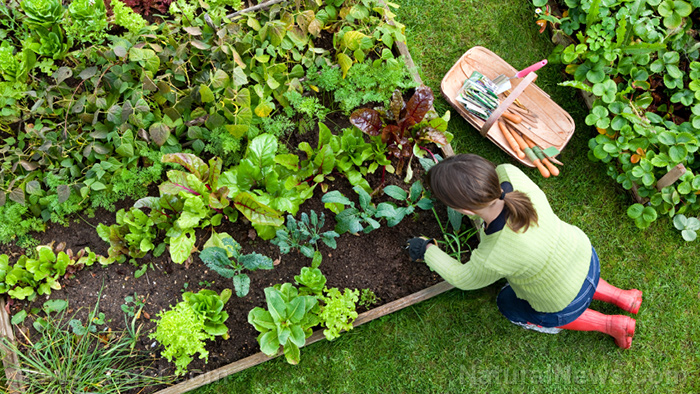
Advertisement
Fruits and vegetables that boast impressive nutrition profiles and health benefits are considered “superfoods.” But this label doesn’t come cheap. Organic produce labeled “superfoods” at the supermarket tend to be sold at more expensive prices than other produce.
You might not notice it at first. However, you’d have lost hundreds of dollars from all of those superfood purchases over time.
But it doesn’t have to be a toss-up between nutrition or budget. You can have both at the same time with an edible garden. With a bit of work, dedication and tons of patience, you can cut back on those expenses while reaping fresh, homegrown superfoods for you and your family.
Take a look at some of the easiest superfoods to grow at home:
Kale
This staple salad green is an excellent source of immune-boosting vitamin C. Kale also contains high levels of vitamin A, an essential micronutrient that helps improve vision. In addition, kale has tons of antioxidants that help protect against cellular damage and inflammation. Kale grows best in well-drained soil.
Blueberries
Blueberries pack quite a punch. These little purple fruits are one of the richest sources of antioxidants that help prevent infection and disease due to free radicals. Anthocyanins, the plant compounds that give blueberries their distinct purple hue, are also known to boost brain health and reduce the risk of cancer.
Sweet potatoes
Sweet potatoes are healthier alternatives to regular spuds. Rich in vitamin A, sweet potatoes support vision and bone development. As plants, sweet potatoes require little maintenance. It’s also possible to re-grow these from scraps. Just take half a sweet potato and insert toothpicks at one-inch intervals from the base. Place the sweet potato in a cup with shallow water. Once it starts to sprout and grow roots, re-plant it in soil.
Beetroot
Beetroot gets a bit of a bad rap due to its bitter flavor. But you’d be making a big mistake in avoiding this superfood. Beetroot is loaded with folate, an essential B vitamin that supports cell development. Folate also helps protect deoxyribonucleic acid (DNA) from pathogens and free radicals that can cause significant damage. In addition, folate prevents birth defects in pregnant women.
Pumpkin
This popular fall staple is a nutritional powerhouse. Pumpkin flesh, for instance, is chock-full of essential micronutrients including potassium, copper, manganese and vitamins A, C and E. Pumpkin seeds also hold up well on their own, boasting high amounts of antioxidants, iron, zinc and magnesium. Pumpkins can take up to four months to mature, so it’s best to plant them in late spring.
Tomatoes
Lycopene, the plant pigment that gives tomatoes their rich red color, is also a strong antioxidant that helps reduce the risk of certain cancers including those of the prostate, colon and pancreas. Tomatoes are a long-season crop, so opt for the small clustering varieties if you want to be able to harvest them year-round.
Microgreens
Microgreens are a mixture of sprouts from various herbs and vegetables. As such, these little sprouts have more nutrients than mature salad greens like lettuce, kale and spinach. To cultivate microgreens, gather a bunch of different seeds and sprout them in a shallow container. Once the sprouts are about one to two inches tall, use scissors to snip them off. Leave a bit of stem so that the sprouts can grow back.
Broccoli
Cruciferous vegetables like broccoli contain sulfur-rich compounds that help protect against brain damage. These compounds are also known to support heart health and digestion. As a cool-season crop, broccoli is best planted in spring when the temperatures are still low. When grown from seeds, broccoli takes about 100 to 150 days to mature.
Peas
Peas are a clean source of protein. These little veggies are also rich in iron, an essential component of red blood cell production. Peas are best planted in the warm spring months. Since peas are climbing plants, you’ll need to provide a trellis to prevent the plant’s tendrils from overcrowding. Peas require little maintenance, and most varieties take about two months to mature.
You don’t need to be an experienced gardener to grow nutrient-rich superfoods at home. Start gardening this spring so you can reap the health and economical benefits of fresh, homegrown superfoods.
Sources:
Advertisements







